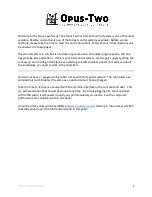
Model 6487 Reference Manual
IEEE-488 Bus Overview
D-3
Bus description
The IEEE-488 bus, which is also referred to as the GPIB (General Purpose Interface Bus),
was designed as a parallel transfer medium to optimize data transfer without using an
excessive number of bus lines. In keeping with this goal, the bus has only eight data lines
that are used for both data and with most commands. Five bus management lines and three
handshake lines round out the complement of bus signal lines.
A typical setup for controlled operation is shown in
. Generally, a system will
contain one controller and a number of other instruments to which the commands are
given. Device operation is categorized into three operators: controller, talker, and listener.
The controller controls the instruments on the bus. The talker sends data while a listener
receives data. Depending on the type of instrument, any particular device can be a talker
only, a listener only, or both a talker and listener.
There are two categories of controllers: system controller and basic controller. Both are
able to control other instruments, but only the system controller has the absolute authority
in the system. In a system with more than one controller, only one controller may be active
at any given time. Certain protocol is used to pass control from one controller to another.
The IEEE-488 bus is limited to 15 devices, including the controller. Thus, any number of
talkers and listeners up to that limit may be present on the bus at one time. Although sev-
eral devices may be commanded to listen simultaneously, the bus can have only one active
talker or communications would be scrambled.
A device is placed in the talk or listen state by sending an appropriate talk or listen com-
mand. These talk and listen commands are derived from an instrument’s primary address.
The primary address may have any value between 0 and 31, and is generally set by rear
panel DIP switches or programmed in from the front panel of the instrument. The actual
listen address value sent out over the bus is obtained by ORing the primary address with
$20. For example, if the primary address is $14, the actual listen address is $34 ($34 = $14
+ $20). In a similar manner, the talk address is obtained by ORing the primary address
with $40. With the present example, the talk address derived from a primary address of
$14 would be $54 ($54 = $14 + $40).
The IEEE-488 standards also include another addressing mode called secondary address-
ing. Secondary addresses lie in the range of $60-$7F. Note, however, that many devices,
including the Model 6487, do not use secondary addressing.
Once a device is addressed to talk or listen, the appropriate bus transactions take place. For
example, if the instrument is addressed to talk, it places its data string on the bus one byte
at a time. The controller reads the information and the appropriate software can be used to
direct the information to the desired location.
















































